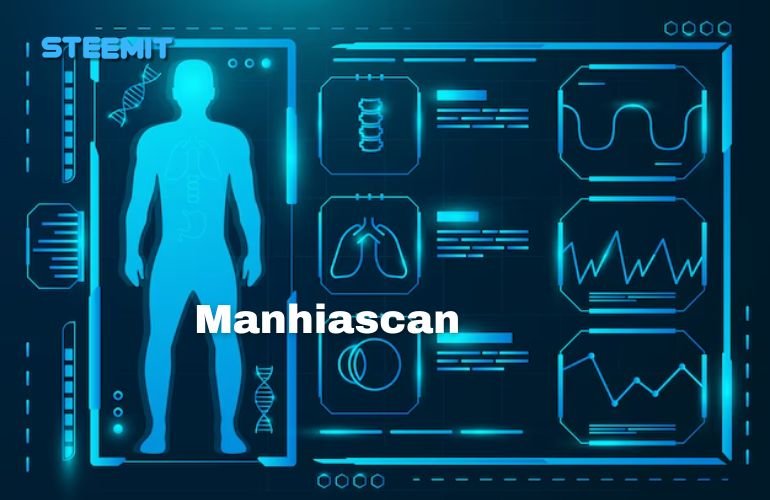In a world driven by data, the ability to transform physical information into digital insights is reshaping industries. Manhiascan stands at the intersection of this shift—a tool designed to streamline document handling through advanced scanning, AI integration, and real-time analytics. By converting text, images, and barcodes into structured data, it addresses modern demands for speed, accuracy, and security. But how does it achieve this? What challenges arise when merging physical and digital workflows? And why are sectors from healthcare to retail adopting it rapidly? This article breaks down Manhiascan’s technology, benefits, and practical impact, offering clarity on its role in today’s fast-evolving digital landscape.
Core Features and Technological Capabilities
Manhiascan’s value lies in its ability to merge practical scanning tools with intelligent automation. Central to its design is Optical Character Recognition (OCR), which extracts text from handwritten notes, printed documents, or images, even under low-resolution conditions. Paired with barcode scanning, it decodes product labels, inventory tags, or serial numbers, enabling seamless tracking across systems.
The tool’s AI-driven image enhancement refines blurry or distorted visuals, adjusting brightness, contrast, and orientation to improve readability. This is complemented by document analysis, where algorithms categorize files, identify key data points, and flag inconsistencies—ideal for invoices, contracts, or medical records.

Security remains a priority. Manhiascan structures extracted data into standardized formats (CSV, JSON) while applying encryption protocols to safeguard sensitive information. It supports multiple file types—PDFs, JPEGs, spreadsheets—and integrates with existing databases or cloud platforms, reducing manual data entry.
By combining high-resolution scanning with adaptive AI, the tool bridges gaps between physical documents and digital workflows, addressing needs for precision and adaptability in data-heavy environments.
How Manhiascan Operates
Manhiascan’s workflow begins with scanning physical documents or images using devices like smartphones, scanners, or cameras. The system processes these inputs through AI-powered preprocessing, correcting distortions, adjusting lighting, and sharpening text to prepare files for analysis.
Next, OCR and barcode scanning extract raw data—text, numbers, or symbols—from the enhanced images. The tool’s algorithms cross-reference this data against predefined templates or patterns, identifying fields like dates, names, or product codes. For complex documents, machine learning models classify content, such as separating medical diagnoses from patient demographics in a hospital record.
Extracted information is then structured into organized formats (tables, databases) and encrypted. Manhiascan auto-saves results to cloud platforms like Google Drive or enterprise systems such as Salesforce, enabling instant access for teams.
Real-time data processing allows immediate updates—for instance, adjusting retail inventory counts after scanning shipment barcodes. Predictive analytics tools analyze historical data trends, forecasting future needs like restocking schedules or maintenance timelines.
By automating repetitive tasks and learning from user interactions, the system minimizes manual intervention while maintaining accuracy, making it adaptable for industries requiring rapid, reliable data conversion.
Business Benefits and Competitive Advantages
Manhiascan drives measurable improvements across operations by reducing reliance on manual data entry. Automation of scanning and processing tasks allows employees to focus on strategic work, cutting time spent on repetitive activities. High accuracy in OCR and AI analysis minimizes errors common in manual handling, ensuring reliable outputs for tasks like financial reporting or inventory tracking.
Cost savings emerge from lower labor requirements and reduced error correction. Businesses using the tool report fewer discrepancies in billing or order fulfillment, directly impacting profitability. Real-time data access supports faster decisions—managers can adjust supply orders or marketing strategies using up-to-date insights.
Customer experience benefits stem from personalized interactions enabled by accurate data. Retailers, for instance, track purchasing patterns to tailor promotions, while healthcare providers quickly access patient histories for informed care. Security protocols like encryption and role-based access protect sensitive data, aligning with regulations like GDPR or HIPAA.
Scalability is achieved through cloud-based architecture, accommodating growing document volumes without additional infrastructure investments. Companies expand usage across departments or regions without compromising performance, maintaining consistency in data handling.
By combining efficiency, precision, and adaptability, Manhiascan positions organizations to outperform competitors in data-driven markets.
Applications Across Industries
Manhiascan adapts to diverse sector needs, offering tailored solutions for data-heavy workflows. In healthcare, the tool digitizes patient records, prescriptions, and lab reports. Clinicians retrieve histories instantly, reducing delays in diagnosis or treatment. Pharmacies use barcode scanning to manage drug inventories, preventing stockouts or expired medications.
Financial institutions automate invoice processing and loan applications. Banks extract data from scanned IDs, tax forms, or contracts, accelerating approvals while adhering to compliance standards. Fraud detection improves as algorithms flag mismatched signatures or altered figures in transactional documents.

Retail and logistics benefit from real-time inventory updates via barcode scans. Warehouse teams track shipments, update stock levels, and generate restocking alerts automatically. E-commerce platforms sync product details across channels, ensuring accurate listings and reducing fulfillment errors.
In the legal sector, Manhiascan authenticates legal agreements, court filings, or patents. Law firms index case documents digitally, enabling quick searches during litigation. Government agencies archive public records securely, with encryption preventing unauthorized access.
Educational institutions convert textbooks, research papers, or handwritten notes into searchable digital libraries. Professors distribute materials electronically, while students annotate scanned resources without physical copies.
By addressing unique challenges in each field—from compliance in finance to accuracy in healthcare—Manhiascan proves its versatility as a cross-industry solution for modern data management.
Challenges and Ethical Considerations
Adopting Manhiascan introduces hurdles tied to data handling and system adaptation. Data privacy risks arise when sensitive information—medical records, financial details—is digitized. While encryption secures data, breaches or unauthorized access remain threats, especially if user permissions or storage protocols are misconfigured. Compliance with regulations like GDPR requires constant updates, adding administrative burdens.
High implementation costs deter smaller organizations. Licensing fees, staff training, and infrastructure upgrades strain budgets. Return on investment may lag for businesses with limited document volumes, making initial adoption less appealing.
Integration complexity surfaces when merging Manhiascan with legacy systems. Incompatible software or outdated databases force custom coding, increasing project timelines. Teams may lack technical expertise, requiring external consultants or extended troubleshooting.
Ethical dilemmas emerge around AI bias and transparency. Algorithms trained on incomplete datasets might misclassify data, skewing outcomes in hiring documents or loan applications. Users might not understand how decisions are made, eroding trust. Regular audits and diverse training data help reduce biases, but accountability gaps persist.
Over-reliance on automation risks displacing human judgment. Errors in scanned documents—blurred text, damaged barcodes—could go unnoticed if manual checks are phased out. Striking a balance between efficiency and oversight remains critical.
Addressing these challenges requires clear policies, ongoing training, and adaptable frameworks to align Manhiascan’s benefits with ethical and operational realities.
Future Trends and Strategic Adoption
Manhiascan’s evolution aligns with advances in AI and cloud computing. Future iterations may incorporate adaptive learning models, where the system refines data extraction patterns based on user feedback, reducing manual corrections. Integration with IoT devices—like smart scanners or warehouse sensors—could automate data capture further, enabling instant updates across supply chains.
Predictive analytics might expand to anticipate operational bottlenecks, such as identifying seasonal demand spikes in retail or equipment maintenance needs in manufacturing. Enhanced natural language processing could interpret unstructured text—emails, notes—transforming them into actionable tasks.
The shift toward sustainable digital practices will amplify Manhiascan’s appeal. Reducing paper use and physical storage cuts carbon footprints, aligning with corporate sustainability goals. Energy-efficient cloud infrastructures and recyclable hardware for scanning devices may become standard offerings.
For businesses, successful adoption hinges on phased implementation. Starting with pilot projects in high-impact areas—accounts payable, patient onboarding—allows teams to test workflows before scaling. Training programs focused on troubleshooting and data governance ensure smooth transitions.

Vendors might offer modular pricing, letting organizations pay for features they need. Partnerships with ERP or CRM platforms could simplify integration, minimizing technical barriers. Regular software updates addressing security gaps or compliance changes will maintain relevance.
As industries prioritize agility, Manhiascan’s role in bridging analog and digital workflows will grow. Organizations investing now position themselves to harness emerging capabilities, staying ahead in markets where data speed and accuracy define success.
Conclusion
Manhiascan represents a shift in how businesses manage information, blending scanning technology with AI to transform physical data into digital assets. Its applications span healthcare, finance, retail, and beyond, offering speed, accuracy, and security while confronting challenges like integration costs and privacy risks. As AI advances, tools like Manhiascan will grow smarter, predicting trends and automating complex tasks. Organizations adopting it today position themselves to adapt faster, reduce waste, and meet evolving customer expectations. While hurdles exist, strategic planning and ethical frameworks can align its benefits with long-term goals. In an era where data defines success, solutions like Manhiascan are no longer optional—they are foundational for staying competitive.





